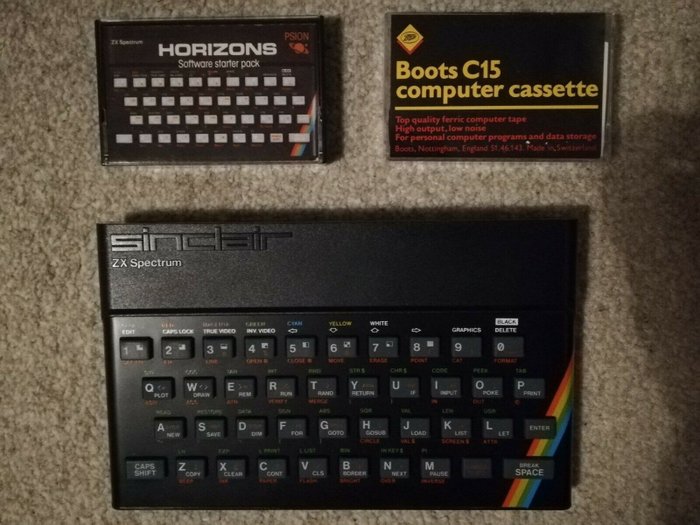

My school bought a ZX81 and a logo turtle - one for the whole school. If anyone hasn't seen Micro Men, on the Sinclair vs Acorn rivalry, its definitely worth a watch:Īnd seeing some of the participants watch it and recall their own versions of the story is good too: Famously the C5 electric "car" but also wafer scale memory! Sadly, he seemed to lose interest in building on his success and quickly moved on to the next project. Sir Clive Sinclair had a unique genius for designing and then marketing products that caught the public imagination.

This made computing with colour and enough memory to write programs that were substantial and interesting available to a much wider group than before. It's easy to quibble about some aspects of the Speccy - the rubber keyboard or the limited BASIC for example - but the key thing is that it offered an awful lot for the price - starting at £125 in the UK when the cheapest BBC Micro was £300. Today, that portion would very likely have been "higher up the stack": let's say, I would be an absolute master of the DOM using Javascript, instead of a master of the ZX Spectrum ROM using Z80 assembly.īut would that portion be less "worthy" or less useful? I'm not so sure. In hindsight, I only understood a very small portion of the technology I was working with, even though that understanding was absolutely mindblowing at the time. But only up to some point: I could find my way around a ZX Spectrum memory map just fine, but could I have built such a machine from scratch? No way! The "home computers" of the 1980s were still simple enough to allow "true understanding". Sometimes that leads to true understanding, sometimes just to confusion, or at best the understanding that you don't understand. If you're truly (or perhaps excessively?) inquisitive, you try to dissect that magic. I sort-of get what you're saying here, I think, but I'm not sure you're right.Īs an inquisitive young person, you are, quite likely, at some point confronted with something that seems like magic. But that's mostly nostalgia talking: the capabilities of the Spectrum would be laughed away (and rightfully so) these days.

The complexity of today's systems makes all of that impossible. At some point, I'm pretty sure I had memorized the purpose of every "OS-related" memory location of the Spectrum (all 16384 bytes of it). It was surprisingly small and elegant, and easily modified to perform certain tricks, such as varying the baud rate of the cassette interface, the order in which bytes were loaded (allowing for cool effects like "the screen is populated, but not from top-to-bottom, but the other way around), and many other things.Īnd this was all waaaaay before the Internet, relying on (photocopies of) library books about the Z80 and magazine articles, which arrived late-if-at-all.
#In deep sinclair zx spectrum code
I still remember disassembling the machine code responsible for handling the "LOAD" and "SAVE" commands, which were an interface between memory and the tape deck (the only long-term storage available). But: the great thing was, all the machine code that processed said BASIC was right there, in the ROM, just waiting to be examined. But it was also quite limited, mostly due to being very slow. The built-in BASIC made the Spectrum very accessible. By modern, or even contemporary, standards, it's a weirdly under-powered machine, yet it introduced a (mostly "continental") generation to gaming, programming and much more. I have very fond memories of the ZX Spectrum.


 0 kommentar(er)
0 kommentar(er)
